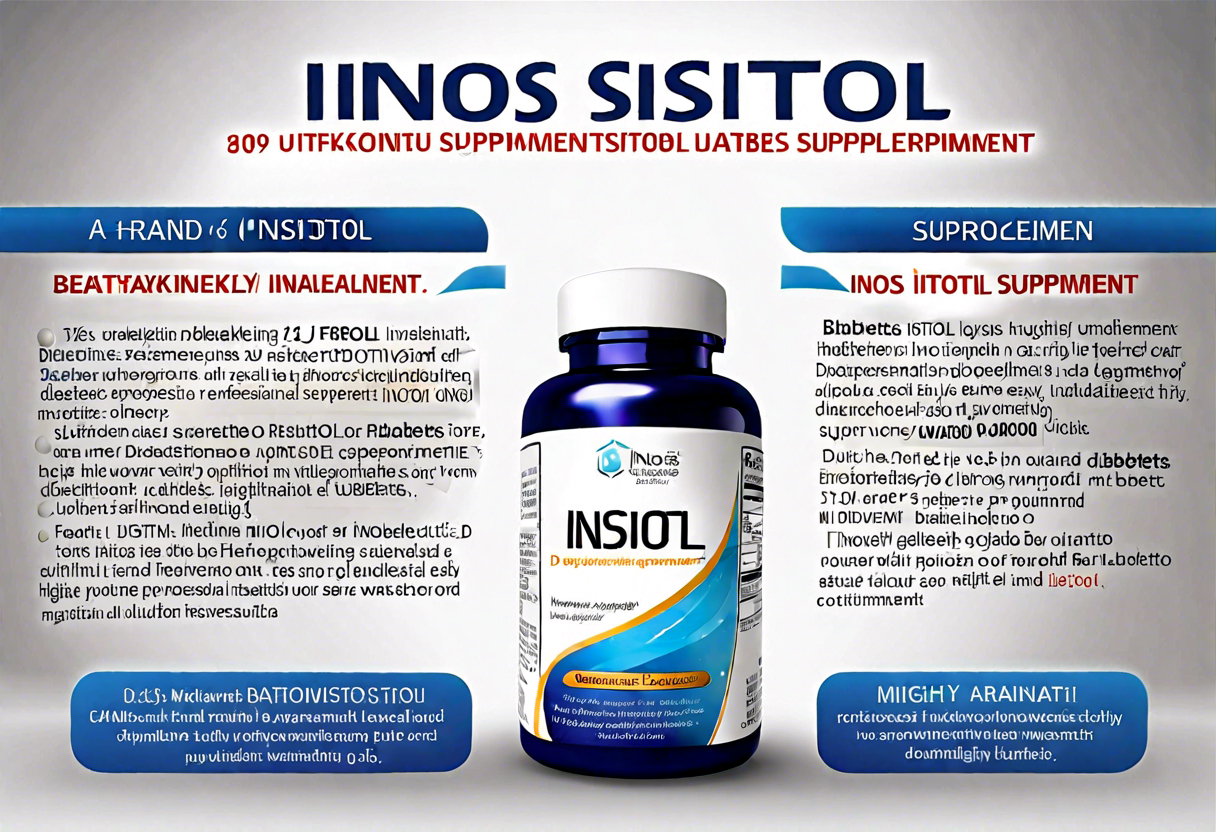The Importance of Exercise in Managing Type 2 Diabetes
Exercise plays a crucial role in managing type 2 diabetes by improving blood sugar control, reducing insulin resistance, and enhancing overall health and well-being. People with type 2 diabetes often have impaired insulin function, making it difficult for their bodies to regulate blood sugar levels effectively. Regular physical activity can help counteract these issues and provide numerous benefits to those with type 2 diabetes.
One of the primary ways exercise benefits individuals with type 2 diabetes is by lowering blood sugar levels. When you engage in physical activity, your muscles use glucose for energy, which helps to clear excess sugar from the bloodstream. This can lead to improved insulin sensitivity and more stable blood sugar levels over time.
Aerobic exercises, such as walking, jogging, swimming, or cycling, are particularly effective for type 2 diabetes control. These activities get your heart rate up and increase your breathing, improving cardiovascular health and supporting weight management. Aim for at least 150 minutes of moderate-intensity aerobic exercise or 75 minutes of vigorous aerobic exercise per week, spread out over several days.
In addition to aerobic activities, strength training exercises also play a vital role in managing type 2 diabetes. Lifting weights or engaging in resistance exercises helps to build lean muscle mass. More muscle mass means a higher resting metabolic rate, which can aid in weight control. Additionally, strength training improves insulin sensitivity and glycemic control, further enhancing diabetes management. Aim for two or three strength training sessions per week, targeting all major muscle groups.
Yoga and stretching exercises are other excellent options for individuals with type 2 diabetes. These activities promote flexibility, mobility, and relaxation, which can help reduce stress levels. Stress can negatively impact blood sugar control, so incorporating yoga or stretching into your routine can be beneficial. Furthermore, these exercises enhance balance and coordination, reducing the risk of falls, which can be particularly important for older adults with diabetes.
To incorporate regular exercise into your diabetes management routine, consider the following tips:
-
Consult with your healthcare provider: Before starting any exercise program, it’s essential to consult with your doctor or diabetes educator. They can provide tailored recommendations based on your specific health needs and fitness level.
-
Start slowly and progress gradually: If you’re new to exercise or haven’t been active for a while, begin with low-impact activities like walking and gradually increase the duration and intensity over time. Listen to your body and take rest days as needed.
-
Choose activities you enjoy: Find activities that you genuinely enjoy doing to increase your motivation and make exercise more enjoyable. This could include dancing, gardening, playing a sport, or joining group fitness classes.
-
Buddy up: Exercising with a friend or joining a group can provide accountability and make it more enjoyable. Plus, it can be a great opportunity to socialize and connect with others who share similar goals.
-
Monitor your blood sugar levels: Regularly check your blood sugar before, during, and after exercise to understand how your body responds. This will help you adjust your medication or diet as necessary to maintain stable blood sugar levels.
Exercise is a powerful tool in managing type 2 diabetes. Alongside proper nutrition and medication, regular physical activity can improve blood sugar control, increase insulin sensitivity, support weight management, and enhance overall well-being. By incorporating aerobic exercises, strength training, and yoga or stretching into your routine, you can take control of your health and effectively manage type 2 diabetes. So lace up your sneakers, grab a friend, and get moving for better diabetes management and a healthier life.
The Benefits of Aerobic Exercises for Type 2 Diabetes Control
Aerobic exercises are a crucial component of managing type 2 diabetes. These exercises focus on increasing your heart rate and breathing, which helps improve the cardiovascular system. Regular aerobic exercise not only helps control blood sugar levels but also aids in weight management, lowers blood pressure, and reduces the risk of heart disease.
Engaging in aerobic exercises causes your muscles to use more glucose, which helps to decrease blood sugar levels. Furthermore, these exercises enhance insulin sensitivity, which allows your body to utilize insulin more efficiently. As a result, your blood sugar levels become more stable.
When considering which exercises to include in your routine, there are various options to choose from. Brisk walking is a popular and accessible aerobic exercise for individuals with type 2 diabetes. It doesn’t require any special equipment and can be easily incorporated into your daily routine. Other effective aerobic exercises include cycling, swimming, jogging, or participating in group fitness classes.
It’s essential to aim for a minimum of 150 minutes of moderate-intensity aerobic exercise per week, spread over at least three days. If your fitness level allows, you can increase the intensity or duration gradually. However, it’s important to consult with your healthcare provider before starting any new exercise regimen to ensure it is safe and appropriate for your specific needs.
Alongside aerobic exercises, strength training exercises also play a vital role in managing type 2 diabetes. Strength training, also known as resistance training, involves working your muscles against resistance to build strength. This type of exercise helps to increase muscle mass, which, in turn, improves insulin sensitivity and glucose control. Including strength training exercises in your routine can be done with the use of free weights, weight machines, resistance bands, or even bodyweight exercises like squats and push-ups.
Yoga and stretching exercises into your routine can provide additional benefits for type 2 diabetes control. These exercises improve flexibility, balance, and relaxation, which can help reduce stress levels. Stress management is crucial for individuals with diabetes, as stress hormones can raise blood sugar levels. Yoga, tai chi, and Pilates are excellent options to consider for their gentle movements and focus on breathing and mindfulness.
Aerobic exercises, strength training exercises, and yoga and stretching exercises are all essential for the control of type 2 diabetes. By incorporating a combination of these exercises into your routine, you can effectively manage blood sugar levels, improve insulin sensitivity, and reduce the risk of complications associated with this condition. Remember to consult with your healthcare provider before starting any new exercise program, and gradually increase the intensity and duration to avoid injury or overexertion.
Aerobic exercises for type 2 diabetes control
Regular exercise plays a crucial role in managing type 2 diabetes. Alongside a healthy diet and medication, engaging in physical activity can help improve blood sugar control, increase insulin sensitivity, and reduce the risk of complications associated with diabetes. When it comes to exercise, incorporating a combination of aerobic exercises, strength training, and flexibility exercises can provide the greatest benefits for individuals with type 2 diabetes.
Aerobic exercises, also known as cardio exercises, are an excellent choice for controlling type 2 diabetes. These exercises are designed to increase your heart rate and breathing, helping your body use insulin more effectively. Walking, jogging, swimming, cycling, and dancing are some of the most effective aerobic exercises for managing diabetes. These activities can be easily adapted to suit any fitness level, making them ideal for beginners and those with physical limitations.
When engaging in aerobic exercises, it’s important to start slowly and gradually increase the intensity and duration of your workouts. Aim for at least 150 minutes of moderate-intensity aerobic activity each week spread over three or more days. Moderate-intensity exercises should make you break a sweat and breathe harder than usual.
In addition to the traditional aerobic exercises, high-intensity interval training (HIIT) has also been shown to be beneficial for individuals with type 2 diabetes. HIIT involves short bursts of intense exercise followed by periods of rest or lower intensity activity. This form of exercise has been found to improve glucose control and increase insulin sensitivity more effectively than continuous moderate-intensity exercise. However, it’s important to consult with your healthcare provider before starting any high-intensity exercise program.
Besides the physiological benefits, aerobic exercises also offer mental health benefits, such as reducing stress and improving overall well-being. Regular physical activity can also aid in weight management, lower blood pressure, and improve cholesterol levels, which are all important factors in diabetes management.
To incorporate aerobic exercises into your diabetes management routine, start by setting realistic goals and finding activities that you enjoy. Consider working out with a friend or joining a group exercise class to stay motivated. Additionally, monitor your blood sugar levels before, during, and after exercise, and adjust your medication or food intake as needed.
To ensure a safe exercise experience, remember to wear appropriate footwear, stay hydrated, and listen to your body. If you experience any unusual symptoms or have concerns about exercising with diabetes, consult with your healthcare team before starting a new routine.
Aerobic exercises are an essential component of an effective diabetes management plan. They can help control blood sugar levels, increase insulin sensitivity, and improve overall health and well-being. By incorporating regular aerobic exercise into your daily routine, you can take proactive steps toward managing type 2 diabetes and leading a healthier, more active lifestyle.
The Role of Yoga and Stretching Exercises in Controlling Type 2 Diabetes
Regular physical activity is crucial for individuals with type 2 diabetes as it can help manage blood sugar levels, improve insulin sensitivity, and reduce the risk of complications. While aerobic exercises and strength training are often emphasized, yoga and stretching exercises also offer significant benefits to individuals with type 2 diabetes. yoga and stretching exercises into a diabetes management routine can provide holistic support for overall health and well-being.
Yoga has been practiced for centuries and is known for its mind-body connection and ability to reduce stress. For individuals with type 2 diabetes, stress management is essential as stress can elevate blood sugar levels. By practicing yoga, individuals can release tension, relax their muscles, and reduce stress levels. Moreover, certain yoga postures, such as forward bends and twists, can stimulate the abdominal organs and improve digestion, which is particularly beneficial for individuals with diabetes. Improved digestion can help regulate blood sugar levels and enhance overall metabolic function.
In addition to stress reduction, yoga and stretching exercises can promote flexibility, balance, and posture. Individuals with type 2 diabetes often experience complications such as peripheral neuropathy, which affects the nerves in the feet and legs. This can lead to reduced flexibility and balance. Engaging in yoga and stretching exercises can help improve these factors, reducing the risk of falls and injuries. Furthermore, maintaining good posture is important for spinal alignment and overall body mechanics, which can aid in optimal blood flow and insulin action.
When incorporating yoga and stretching exercises into a diabetes management routine, it is important to choose exercises that are appropriate for individual fitness levels and abilities. Beginners may start with gentle stretches and basic yoga poses, gradually increasing the intensity and duration of their practice over time. It is advisable to seek guidance from a certified yoga instructor who can provide modifications and ensure proper form and technique.
Integrating yoga and stretching exercises into a diabetes management routine can have numerous benefits. It can improve blood sugar control, reduce stress levels, enhance flexibility and balance, and promote overall well-being. However, it is important to note that yoga and stretching exercises should complement other forms of physical activity, such as aerobic exercises and strength training, to create a well-rounded exercise regimen. Remember to consult with a healthcare professional before starting any new exercise program, especially if you have any existing medical conditions.
Yoga and stretching exercises play a valuable role in controlling type 2 diabetes. They provide numerous physical and mental health benefits that contribute to overall diabetes management. By incorporating these exercises into a regular routine, individuals can experience improved blood sugar control, reduced stress levels, increased flexibility and balance, and enhanced overall well-being. Stay motivated, stay active, and remember to consult with your healthcare professional to ensure the exercises are suitable for your individual needs.
Tips for Regular Exercise into a Diabetes Management Routine
Regular exercise plays a crucial role in managing type 2 diabetes. It helps to control blood sugar levels, improve insulin sensitivity, and maintain a healthy weight. exercise into your daily routine can be challenging, but with the right approach, it can become a sustainable habit. Here are some tips to help you make exercise a regular part of your diabetes management routine.
-
Start Slowly: If you’re new to exercise or have been inactive for a while, start slow and gradually increase the intensity and duration of your workouts. Begin with low-impact activities like walking, swimming, or cycling, and aim for at least 30 minutes of exercise most days of the week.
-
Find Activities You Enjoy: Choose exercises that you enjoy doing. This will make it easier to stick with your routine. Try different activities such as dancing, hiking, gardening, or playing a sport. Experiment with various exercises until you find what you love.
-
Set Realistic Goals: Set achievable goals for yourself. Start with small, attainable targets, and gradually increase them over time. For example, aim to walk for 10 minutes in the beginning and then gradually increase it to 30 minutes.
-
Incorporate Strength Training: Strength training exercises are beneficial for people with type 2 diabetes as they help build muscle mass and improve insulin sensitivity. Include activities such as weightlifting, resistance band exercises, or bodyweight exercises like push-ups and squats in your routine. Aim for two to three sessions per week, targeting all major muscle groups.
-
Mix It Up: Variety is the key to staying motivated. Mix different types of exercises to keep your routine interesting and prevent boredom. You can alternate between aerobic exercises, strength training, and flexibility exercises like yoga or stretching. This will also help target different aspects of your diabetes management.
-
Make it a Social Activity: Exercise with a friend or join a group class. Having a workout buddy or participating in group activities can make exercise more enjoyable and provide accountability. It also offers an opportunity to connect with others who share similar health goals.
-
Monitor Your Blood Sugar: Keep track of your blood sugar levels before, during, and after exercise. This will help you understand how your body responds to different activities and adjust your routine accordingly. Consult with your healthcare provider to determine if any modifications are needed in your diabetes management plan.
-
Stay Consistent: Consistency is key when it comes to reaping the benefits of exercise. Make exercise a priority in your daily schedule and try to be consistent with your workouts. Aim for a minimum of 150 minutes of moderate-intensity aerobic activity per week, spread over at least three days.
Remember to consult with your healthcare provider before starting any new exercise program, especially if you have any underlying health conditions or concerns. They can provide personalized recommendations based on your specific needs and goals.
Regular exercise into your diabetes management routine may require some effort and dedication initially, but the long-term benefits are worth it. Stay committed to your exercise plan, make adjustments as needed, and enjoy the positive impact it has on your overall health and diabetes control. Remember, small steps make a big difference in managing type 2 diabetes.
Conclusion
Regular exercise plays a crucial role in managing type 2 diabetes. By incorporating a combination of aerobic exercises, strength training exercises, and yoga/stretching exercises into a diabetes management routine, individuals can effectively control their blood sugar levels, improve insulin sensitivity, reduce body weight, and enhance overall health.
Aerobic exercises such as walking, jogging, cycling, swimming, and dancing are particularly beneficial for type 2 diabetes control. These exercises increase heart rate, breathing rate, and oxygen consumption, which helps to burn calories, improve blood circulation, and reduce insulin resistance. Engaging in aerobic exercises for 150 minutes per week, spread across several days, can significantly improve blood glucose control and lower the risk of diabetes-related complications.
Strength training exercises are also essential for individuals with type 2 diabetes. These exercises involve resistance training using weights, resistance bands, or bodyweight exercises such as push-ups and squats. By building muscle mass, strength training exercises enhance metabolism and increase insulin sensitivity, leading to better blood sugar control. It is recommended to engage in strength training exercises at least two days a week, targeting major muscle groups.
In addition to aerobic and strength training exercises, incorporating yoga and stretching exercises into a diabetes management routine can provide numerous benefits. Yoga promotes relaxation, reduces stress levels, and improves flexibility. Stretching exercises help to release tight muscles, improve joint mobility, and prevent injuries. By reducing stress and promoting relaxation, yoga and stretching exercises indirectly contribute to better blood sugar control.
Regular exercise into a diabetes management routine can be challenging, but with a few tips, it can become a sustainable habit. It is essential to choose activities that you enjoy and find manageable. Start with small goals and gradually increase the duration and intensity of the exercises. Consider seeking support from a healthcare professional or joining exercise classes for added motivation and guidance. Prioritize consistency over intensity, as regular exercise is key to reaping the long-term benefits for type 2 diabetes control.
Exercise is a vital component of managing type 2 diabetes. By incorporating a variety of aerobic exercises, strength training exercises, and yoga/stretching exercises into a diabetes management routine, individuals can improve blood sugar control, enhance insulin sensitivity, maintain a healthy weight, and reduce the risk of diabetes-related complications. With proper guidance and consistency, exercise can be an effective tool in achieving optimal health and well-being for individuals with type 2 diabetes.









